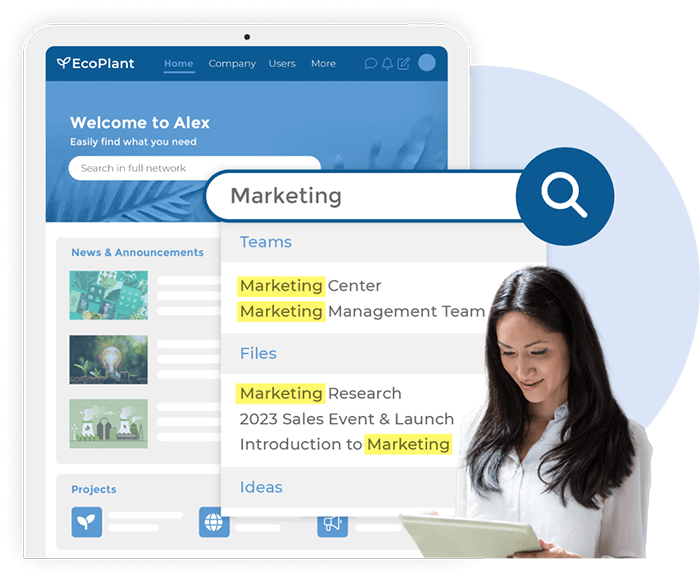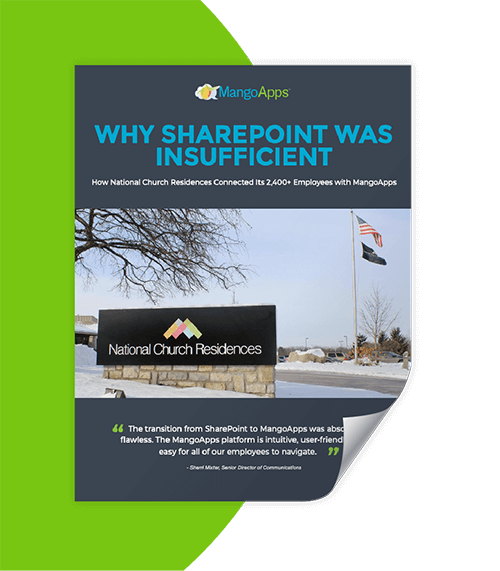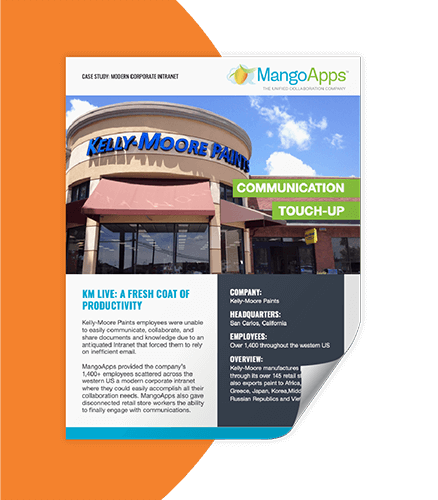In the digital age, organizations rely on intranets to streamline communication, foster collaboration, and centralize vital information. However, the effectiveness of an intranet often hinges on one critical component: its search functionality. An inefficient or poorly configured intranet search can impede productivity and hinder access to essential resources.
In this blog post, we’ll go over a collection of intranet search best practices. Read on for strategies and techniques for transforming your internal network into a well-organized and highly efficient knowledge hub. Whether you’re looking to improve your existing intranet search feature or to start a new, these intranet search best practices will help ensure your team has easy access to the information and resources they need.

Intranet Search Best Practices: Design & UI
By integrating the following intranet search best practices into the design and UI of your company’s internal network, users will find information efficiently and improve their overall experience and productivity.
Prominent Search Bar:
Place the search bar prominently at the top of the intranet homepage or in a fixed position, making it easily accessible from any page within the intranet. This sort of display is what users are accustomed to, based on their usage of other websites and search engines.
Instant Results:
Display search results in real-time as users type their queries. Offering information instantly and reducing the need for a separate search results page boosts efficiency.
Snippet Previews:
Show brief previews of search results. Providing users with a quick overview of the content helps them decide which results to pursue. This saves time, eliminating the need to open, scan, and then close pages of results.
Thumbnails/Previews:
Include thumbnails of multimedia content in search results to make it easier for users to identify relevant content.
Clear Search Result Page: Design the search result page with clear headings, snippets, and a well-organized layout. This is to enhance readability and user understanding.

National Church Residences + MangoApps
Learn how NCR uses MangoApps to:
- Improve top-down communications by replacing MailChimp.
- Create a space for employee engagement where people can interact and collaborate.
- Simplify the daily work life of employees by centralizing resources, information, and tools.
Intranet Search Best Practices: Features
In this section, we’ll explore key features vital for an effective intranet search, optimizing your internal network’s capabilities.
Saved Searches:
Allow users to save frequent searches, effortlessly accessing relevant queries. And, company-wide saved searches expedite organization-wide information retrieval.
Auto-Suggestions & Spelling Corrections:
Implement auto-suggestions for prompt query completion, guiding users to results as they type, accelerating the search process. This speeds up the search process, allowing users to spend their time on important tasks at hand.
Advanced Filters:
Provide refined search options, allowing users to narrow searches by criteria such as date, file type, or content source for swift information retrieval.
Relevance Ranking:
Utilize intelligent algorithms to rank results based on user queries, considering factors like content type, metadata, and user relevance.
Intranet-wide Search:
Enable the search feature to scan the entire intranet, providing comprehensive results for documents, pages, people, and user-generated content through a centralized, user-friendly tool.
Semantic Search:
Apply natural language processing (NLP) for contextually relevant and precise results by understanding the meaning behind search queries.
Mobile-Friendly Search:
Ensure a responsive search interface for mobile devices, adapting to different screen sizes. This practice facilitates convenient information retrieval for frontline teams and remote staff.
Loading Speed:
Optimize the search feature for speed and responsiveness, ensuring swift results even for complex queries. Scalability guarantees efficiency and speed as your organization grows.

Intranet Search Best Practices: Processes
Maintaining relevant search results will always be challenging for intranet platforms, as search results can only be as good as the content it crawls. Intranet search engines deliver helpful, relevant results when high-quality content is regularly uploaded, removed when obsolete, and updated diligently. Next, we’ll go over intranet search best practices pertaining to user and admin processes.
User Training and Onboarding:
Provide training and resources to help users understand how to use the intranet search effectively, including tips on using advanced search features. This will ensure the search feature gets fully utilized.
Content Tagging and Categorization:
Encourage users to tag and categorize content appropriately, ensuring that user-generated content contributes to a well-organized intranet. When it comes to intranet search best practices, enforcing consistent and comprehensive metadata and hashtag standards is vital.
User Feedback:
Include user feedback options for improved search accuracy and relevance. Admins gain valuable analytics, revealing popular search terms and content gaps. This gives them insights on how to adjust their strategy accordingly.
Content Governance:
Establish content owners and review processes to monitor and update content, maintaining its relevance over time. Or, use a modern intranet provider that offers auto-governance features that will automatically archive content or notify admins when it needs reviewing.
User Access Control:
Admins should manage user permissions and access levels, ensuring that sensitive data remains secure and that users can only access information relevant to their roles.
Continuous Improvement:
Regularly assess and refine the search algorithm, taking into account user feedback, analytics, and changes in the intranet’s content landscape.
Data Security and Compliance:
Ensure that the intranet search aligns with data security and compliance regulations, safeguarding sensitive information and adhering to legal requirements. Choosing an intranet that is FedRamp ATO, HITRUST, ISO-27001, and SOC 2 Type II certified will boost these measures immensely.

Kelly-Moore Paints + MangoApps
Learn how Kelly-Moore uses MangoApps to:
- Improve employee efficiency with a centralized information and knowledge hub
- Increase the level of communication between field sales employees and office staff
- Encourage a cohesive and inclusive company culture
Conclusion
Incorporating these intranet search best practices can significantly enhance efficiency and collaboration within your organization. A well-optimized search function not only saves time but also empowers employees to access critical information seamlessly. However, it’s important to recognize the intricate connection between the design of your intranet search and the underlying processes. Neglecting one in favor of the other risks the effectiveness of your intranet search. Just as problems with search can lead employees to disengage from the intranet, finding a harmonious balance between design and processes is key.
But, providing your team with a reliable intranet search fosters a culture of effective knowledge retrieval, laying the groundwork for informed decision-making and streamlined workflows, making the consistent upkeep of your search feature worth it. Continue to refine your search strategies, explore new features, and encourage feedback to ensure your intranet remains a powerful tool for success in today’s ever-changing work landscape.
Want to learn more about the search capabilities a modern intranet can offer? Schedule a call with MangoApps!







